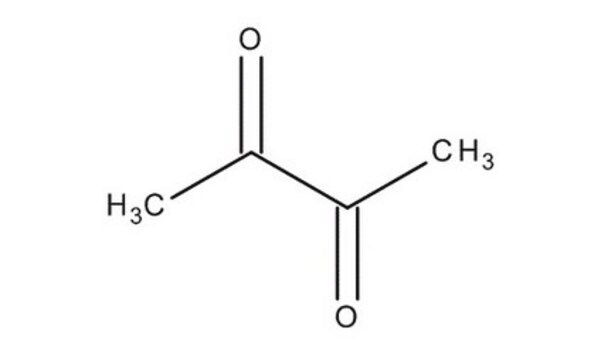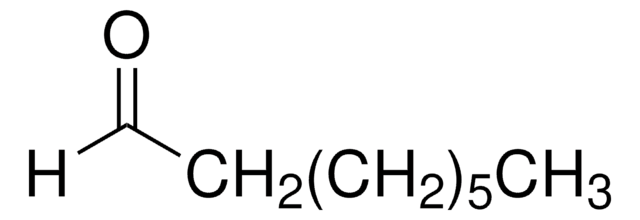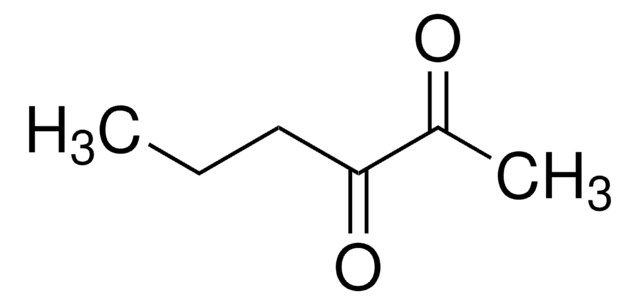69043
2,3-Pentanedione
analytical standard
Sinónimos:
Acetylpropionyl
About This Item
Productos recomendados
grado
analytical standard
Nivel de calidad
Ensayo
≥96.0% (GC)
caducidad
limited shelf life, expiry date on the label
técnicas
HPLC: suitable
gas chromatography (GC): suitable
impurezas
≤1.0% water
índice de refracción
n20/D 1.401-1.409
n20/D 1.404 (lit.)
bp
110-112 °C (lit.)
mp
−52 °C (lit.)
densidad
0.957 g/mL at 25 °C (lit.)
aplicaciones
cleaning products
cosmetics
flavors and fragrances
food and beverages
personal care
Formato
neat
temp. de almacenamiento
2-8°C
cadena SMILES
CCC(=O)C(C)=O
InChI
1S/C5H8O2/c1-3-5(7)4(2)6/h3H2,1-2H3
Clave InChI
TZMFJUDUGYTVRY-UHFFFAOYSA-N
¿Está buscando productos similares? Visita Guía de comparación de productos
Aplicación
Precaución
Palabra de señalización
Danger
Frases de peligro
Consejos de prudencia
Clasificaciones de peligro
Flam. Liq. 2 - Skin Sens. 1B - STOT RE 2
Código de clase de almacenamiento
3 - Flammable liquids
Clase de riesgo para el agua (WGK)
WGK 1
Punto de inflamabilidad (°F)
66.2 °F - open cup
Punto de inflamabilidad (°C)
19 °C - open cup
Elija entre una de las versiones más recientes:
¿Ya tiene este producto?
Encuentre la documentación para los productos que ha comprado recientemente en la Biblioteca de documentos.
Los clientes también vieron
Protocolos
-Cymene; 2,5-Dimethylpyrrole; Acetoin, ≥96%, FCC, FG; 2,5-Dimethylpyrazine; 2,6-Dimethylpyrazine; 2-Ethylpyrazine, ≥98%, FG; 2,3-Dimethylpyrazine; 4-Heptanone; 3-Ethylpyridine; 2,3,5-Trimethylpyrazine; Furfural; Pyrrole; Furfuryl acetate; Linalool; Linalyl acetate; 5-Methylfurfural; γ-Butyrolactone; 2-Acetyl-1-methylpyrrole; Furfuryl alcohol; 2-Acetylpyrrole; Pyrrole-2-carboxaldehyde
Nuestro equipo de científicos tiene experiencia en todas las áreas de investigación: Ciencias de la vida, Ciencia de los materiales, Síntesis química, Cromatografía, Analítica y muchas otras.
Póngase en contacto con el Servicio técnico















